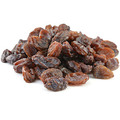Knit a daffodil: free knitting pattern
Knit this cheery sign of spring

You will need
● Sirdar DK yarn in Green (A), pale yellow (B), white (C), medium yellow (D), and (optional) orange or beaded yellow (E)
Needle size: author Nora J Bellows says: 'The daffodils were made using worsted- or light worsted-weight yarn worked on size 6 (4mm) needles. I recommend knitting densely. On size 6 needles: 20-22 stitches and 28-30 rows over 4” (10cm), 5-5 and a half stitches to 1” (2.5cm). If you are concerned about shrinkage, you may use needles one or two sizes larger, so size 7 (4.5mm) or 8 (5mm) needles.
'Because the flowers can be made on any size needle using any gauge yarn, I did not include gauge or needle size information with the flower pattern. Nor have I specified a particular gauge yarn. Needle size and yarn choice is up to you.'
Size
Finished measurements:
Flower head diameter: 15cm
Stem length: 25.5cm
Abbreviations
k - knit
k2tog - knit 2 stitches together – decrease
k3tog - knit 3 stitches together - decrease
Kfb - Knit into the front and back of a stitch increase
Ll-L - Knit left loop increase: knit the left side of the stitch below the stitch just worked.
Ll-R - Knit right loop increase: Knit the right side of the stitch below the stitch just worked
M1 - Make 1: increase 1 stitch using either a M1-L or a M1-R
M1L - Make 1 – left slant increase: Lift the bar between the stitches and place it over the left-hand needle from back to front. Use the right-hand needle to knit the bar through the back loop, creating a twisted stitch
M1R - Make 1 – right slant increase: Lift the bar between the stitches and place it over the left-hand needle from front to back. Use the right-hand needle to knit the bar through the front loop creating a twisted stitch.
P - Purl
p2tog - Purl 2 stitches together
p3tog - Purl 3 stitches together
psso - pass slipped stitch over the last stitch worked
ssk - Slip 2 stitches 1 at a time knit-wise, then k2tog-tbl
ssp - Slip 2 stitches 1 at a time knit-wise, then pass back to the left-hand needle; p2tog-tbl
tbl - Through the back of the loop
Peduncle (main stem)
With A, cast on 3 stitches.
I-Cord Round: Knit across; without turning your work, slip the row to the other end of the needle; pull the yarn across the back to begin the next round.
Repeat the I-cord round for 60 rounds or desired length
Receptacle (flower foundation) & setup for pistil
Round 1: Kfb in each stitch—6 stitches.
Divide the stitches between 2 needles.
Rounds 2–5: Knit around.
Round 6: [K1, k2tog] twice—4 stitches.
Round 7: Knit around.
Round 8: K1, M1-R, k2, M1-L, k1—6 stitches.
Round 9:Join a strand of B; with A and B held together, knit around. Transfer the 6 A stitches to 2 parallel needles or 2 holders held to the outside. Transfer the 6 B stitches to a single needle, held to centre, to work the pistil as follows.
Pistil
Round 1: K2tog around—3 stitches.
Round 2: Ssk, k1—2 stitches.
Rounds 3–9:Knit around. Cut yarn and draw tail through the remaining 2 stitches. Weave in the end.
Receptacle (continued)
Return to the 6 A stitches on 2 holders or needles (if they’re on holders, transfer them to 2 parallel needles).
Round 10: With the live strand of A, [k1, kfb] 3 times—9 stitches.
Round 11: Kfb in each stitch—18 stitches. Cut A.
Round 12: Change to C and knit around. Tie the A and B ends together and weave A down the stem centre to secure.
Round 13: With C, kfb around—36 stitches. Transfer every other stitch to 3 holders held to the centre for the centre flute—18 stitches. At the same
time, transfer the remaining stitches to 2 parallel needles held to the outside. Now that this has been accomplished, keep the first 3 outside stitches of the round on a needle to make the 1st petal; move the remaining 15 outside stitches to 5 holders (3 stitches on each) held to the outside for the last 5 petals; move the remaining 18 C stitches to 3 holders (6 stitches each) held to the centre for the centre flute.
1st petal
Row 1 (WS): Position the flower so that the flower centre is facing away from you and the peduncle is facing down and is between you and the petal you are working: P3 with C.
Row 2 (RS): The right side of the petals are facing you when the flower centre is facing you: K1, M1-R, k1, M1-L, k1—5 stitches.
Row 3: P5.
Row 4: K1, M1-R, kfb, k1, kfb, M1-L, k1—9 stitches.
Row 5: P9.
Row 6: K1, M1-R, k7, M1-L, k1—11 stitches.
Row 7: P11.
Row 8: K1, M1-R, k9, M1-L, k1—13 stitches.
Row 9: P13.
Row 10: K1, ssk, knit to last 3 stitches, k2tog, k1—11 stitches.
Row 11: P11.
Row 12: Repeat row 10—9 stitches.
Row 13: P9.
Row 14: Repeat row 10—7 stitches.
Row 15: P7.
Row 16: Repeat row 10—5 stitches.
Row 17: P5.
Row 18: Ssk, k1, k2tog—3 stitches.
Row 19: S1, ssp, psso—1 stitch. Cut the yarn and draw the tail through the remaining stitch to fasten off.
Weave in the end on the underside edge of the petal.
2nd-6th petals
Transfer the set of 3 stitches to the left of the petal just completed to a needle. Join a new strand of C and complete as for the 1st petal, weaving in the ends at the base and apex of each petal along petal underside edges.
Centre flute
Transfer the 18 C stitches to 3 doublepointed needles. Mark the beginning of the round and join.
Round 1: If the desired colour for the flute is different from the petals, change to D and [k2, p1] 6 times.
Rounds 2–8: Work in the established pattern around.
Note: For a flower with a short flute, stop after round 5 and proceed to round 13.
Round 9: K1, [M1, work 4 stitches in the established pattern] 4 times, p1—22 stitches.
Round 10: Work in the established pattern, knitting all new stitches from round 9.
Note: For a medium-short flute, stop here and proceed to round 13.
Rounds 11–14: Work in the established pattern.
Note: For a flower with a longer flute, continue in pattern for 2 more rounds or desired length, then proceed to the cast-off round.
Cast-off round: If desired, change to E and, using a cable cast-on method, *cast on 2 stitches, then cast off 3 stitches; move the remaining stitch from the right-hand needle onto the left-hand needle; cast on 1 stitch, then cast off 3 stitches; slip the remaining stitch from the right-hand needle onto the left-hand needle; repeat from * until all stitches are cast off. Weave in the end so that the first and last stitch to be cast off sit snugly next to each other.
Finishing
For best results, wire the stems and petals.
 This pattern is taken from 'Beautiful Botanical Knits' by Nora J Bellows. You can buy this book for the special price of £9.73 (rrp £14.99 with free p&p (UK only).
This pattern is taken from 'Beautiful Botanical Knits' by Nora J Bellows. You can buy this book for the special price of £9.73 (rrp £14.99 with free p&p (UK only).
To order please visit www.stitchcraftcreate.co.uk/beautiful-botanical-knits and quote code R11866 upon checkout or call RUCraft on 0844 880 5851.
You might also like...
See all of our themed knitting pattern collections
Five daffodil flower arrangements to try
Love daffodils? Take a daffodil walk
Need to learn how to knit? Watch our how-to videos here
Post your comment
Join us here...
Community
Forums
View all forums
Blogs
View all blogs-
 The five best things I tried this month
The five best things I tried this monthPosted by 11280Adrienne Wyper
-
 Learning Italian - è fantastico!
Learning Italian - è fantastico!Posted by 11320Carol Muskoron







